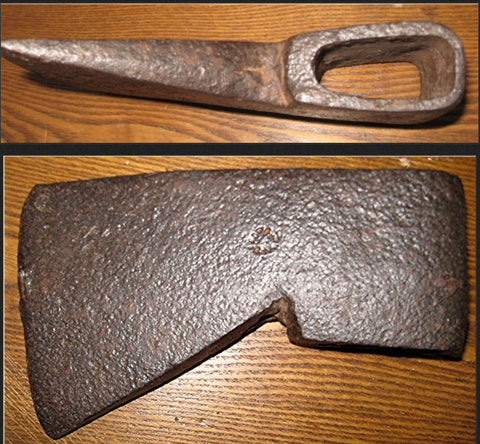Development of the American Axe - Part 1
The Biscayne Axe
When John Smith landed at Jamestown in 1607 he found Indians with axes – iron axes. Say what? Since the Native Americans did not make iron tools these had to come from somewhere. And that somewhere was first Spain then France.
European axes were first traded to the Native Americans by the Spanish. In 1540 when Hernando DeSoto led his expedition through the American Southeast he came upon a settlement where he found “Biscayan iron axes.” These were thought to have been brought by an earlier Spanish expedition to South Carolina in 1526.
A “Biscayne axe” is more hatchet than axe. It weighed about 1 lb. or less having a round or egg-shaped eye, no poll, and a short handle. The handles were usually a simple rounded sapling or branch that would fit through the eye.
They were referred to as “Biscayne” axes as they were made from iron mined in the Bay of Biscay region of Spain and France.
The Spanish traders brought these axes first into the American Southeast. They made their way to the Northeast via Basque and French fishing fleets visiting Newfoundland beginning in the mid-1500’s.
These “axes” were made entirely for trade. There was no use for these small hatchets in Europe. They were too small for felling or splitting. So what did the Native American use the trade axe for?
The Biscayne axes could have been used to cut and trim saplings to make wigwams and other bark covered structures. Of course, they could also be used as a weapon. We know how important the Biscayne axes were to the Native Americans because these axes were often found at burial sites.
The Biscayne trade axe would soon morph into the Hudson’s Bay style axe - a style still produced today, but that is our next story.
For more on the Biscayne axe (and much more) see Mark Miller’s excellent website Fur Trade Tomahawks.
A peek into how these tools were made can be glimpsed by watching Montreal blacksmith Mathieu Collette make a Biscayne axe.
Forging of a Biscayne Trade Axe from Dan Nyborg on Vimeo.
Article
Development of the American Axe - Part 1 – Brant & Cochran
Basque Axe dated at 1500 AD is the oldest iron axe found in the Americas
Article
International news of the Basque Country–Euskadi
Hopewell Indians were among the few indigenous people that had iron tools before 1492
There is evidence that some Native American societies did use iron or steel weapons, but it was not a widespread practice prior to European contact.
Before the arrival of Europeans, Native Americans used a variety of materials for weapons and tools, including stone, bone, wood, and copper. While iron deposits were present in some regions, the technology to smelt iron and produce weapons from it did not develop in most Native American societies.
However, there were some exceptions. For example, the Hopewell culture, which flourished in what is now the Eastern United States from around 200 BCE to 500 CE, produced iron tools such as knives, chisels, and awls.
AI OverviewWhile the Hopewell culture is known for its extensive use of copper and other materials, they also utilized meteoric iron for certain objects, including ornaments and tools, but did not have iron smelting technology.Here's a more detailed explanation:
Hopewell Beads made of Iron




